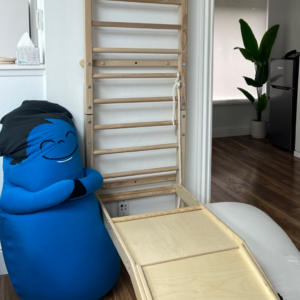
Sensory Processing Disorder (SPD) is a condition that affects how the brain processes sensory information from the environment. It can present in a variety of ways, including hypersensitivity to certain types of sensory input, hyposensitivity to others, or difficulty integrating sensory input. While SPD can occur as a stand alone condition, it can also intersect with other conditions, such as autism spectrum disorder (ASD) and attention deficit hyperactivity disorder (ADHD).
Autism

ASD is a developmental disorder that is characterized by challenges with social communication and interactions, repetitive behaviors, and restricted interests. Many individuals with ASD also experience sensory processing challenges, including hypersensitivity or hyposensitivity to certain types of sensory input. These challenges can exacerbate the social and communication difficulties that are already present in ASD. For example, a child with ASD who is hypersensitive to touch may become overwhelmed and upset when touched by others, leading to social isolation and difficulty forming friendships.
Attention Deficit Hyperactivity Disorder

Similarly, individuals with ADHD may also experience sensory processing challenges. While the primary symptoms of ADHD are related to attention and hyperactivity, many individuals with ADHD also experience difficulty filtering out distracting sensory input, leading to distractibility and difficulty focusing. For example, a child with ADHD who is hypersensitive to sound may be easily distracted by background noise in the classroom, making it difficult to concentrate on the teacher’s instructions.
The Intersection
The intersection of SPD and other conditions can make it more difficult to manage symptoms and achieve optimal functioning. However, there are strategies that can help. For example, occupational therapy can be an effective treatment for SPD and can also help address some of the challenges associated with ASD and ADHD. Occupational therapists can work with individuals to develop strategies for managing sensory input and improving sensory integration skills, which can lead to improved daily functioning and reduced stress and anxiety related to sensory challenges.
In addition to occupational therapy, it is important to seek out support from professionals who are experienced in working with individuals with multiple conditions. For example, a mental health professional who is experienced in working with individuals with both ASD and SPD can provide guidance on coping strategies and offer support and validation for the emotional impact of these conditions. We always recommend seeking out therapists that are neurodiversity affirming.
Finally, it is important to advocate for increased awareness and understanding of the intersection of SPD and other conditions. This can help reduce stigma and increase access to resources and support for individuals with multiple conditions and their families. It can also help increase research efforts into the intersection of these conditions, leading to improved treatment options and outcomes for those who are affected.
In conclusion, the intersection of SPD and other conditions can present unique challenges that require a multi-faceted approach to treatment and management. By seeking out appropriate support and resources, individuals with multiple conditions can achieve optimal functioning and lead fulfilling lives. Advocacy efforts can also help increase awareness and understanding of these conditions, leading to improved outcomes for all who are affected.







